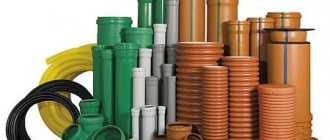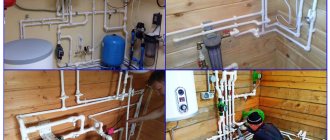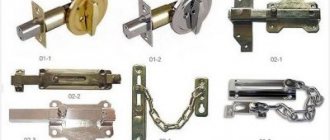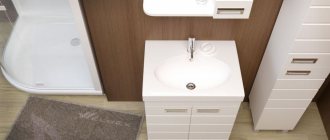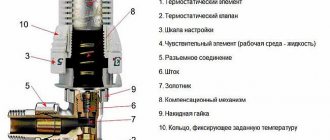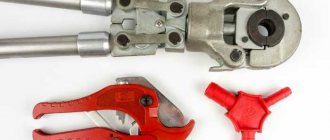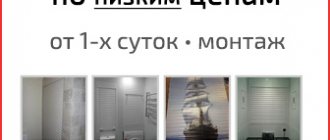Purpose and principle of operation
Plugs shut off the water supply to a certain section of the water supply.
A plug is a special fitting that can be used to shut off the water supply to the system at a certain section of it. The element has the shape of a circle or square. The latter are rarely used for plumbing work.
The plug is used for the following purposes and in the following situations:
- Protection of the inside of the pipe from moisture and dirt, penetration of rodents and insects. This option is observed when installing fence posts made from round/square tubes.
- Suppression of a plastic water pipe or metal/polymer sewer pipe at the time of plumbing repair work in the system (installation/dismantling of its individual elements).
- Protection of tubes from the ends during their transportation.
To plug the gas pipeline, special flange plugs are used. They are subject to repeated installation/dismantling.
Any plug works on the principle of completely sealing the pipe opening. It is a kind of traffic jam. If it is necessary to extend the system (sewage, gas or water supply), the plug is simply removed from its place.
Turning off gas for non-payment: description of the procedure, procedure and rules
The subscriber must ensure unhindered access for specialists to equipment and pipelines
It is especially important not to create obstacles for service company workers if they need to localize or eliminate the consequences of accidents. In emergency situations, access to specialists must be provided at any time upon presentation of their identification
Illegal actions of the consumer may create a safety hazard for other residents and their property. What happens to the body of a person who does not have sex? Sex is almost as basic a need as eating. At least once you start doing it, you won’t stop.
Even if you adhere to... Sexuality What to do after intimacy: 9 rules You've finished having sex. Maybe it was good, maybe it was bad, but that's not the point. The process is over.
Types of stubs
All fittings used to plug pipes are classified according to the material of manufacture, installation method and type of construction. Products are made from the following materials:
- Metal (brass, steel, cast iron elements). The fittings have a high tensile strength, therefore they are widely used in public highways (gas and water supply, sewerage). However, metal plugs are susceptible to corrosion. The exception is chrome steel fittings. This material does not rust. Metal fittings also include a special plug for sealing. It has a special technical hole for installing a seal. As a result, it will be impossible for third parties to interfere with the system.
- Polymers. Plastic plugs are widely used in private construction. The material does not rust or wear out. Polymer fittings are deformed under the influence of high temperatures (sun, hot water from +85 degrees). Polyethylene fittings are used for the internal pipe plug.
- Rubber. The simplest type of element, used either for decorative purposes or exclusively in private water supply.
According to their design, silencing fittings are divided into the following types:
- Threaded. The simplest of all plugs. They simply screw into or onto the pipe.
- Flanged. It is assumed that there are technical holes along the edge into which mounting bolts are driven. The flange plug is often attached to the casing or gas pipe using reinforced hardware (nuts/bolts). If necessary, the fitting can be removed at the right time. As a rule, the flange element is made of metal.
- Pneumatic. Made of rubber. You can install such an element using a pump by forcing air into it. The fitting has a special fitting with a hose. Air is pumped and pumped through it into the plug and back. Such an element can operate at temperatures from -40 to + 70 degrees. The peculiarity of a pneumatic fitting is that it will hermetically close the lumen of the pipe, regardless of the evenness of its inner walls.
- Elliptical. Installation is performed using welding.
Threaded internal
Flanged plastic
Pneumatic
Elliptical
Flanged brass
Threaded external
According to the type of installation, all plumbing elements for silencing are divided into two types:
- Internal. Mounted using special ribbed notches. The upper part of the fitting is covered with a lid.
- External. They work simultaneously as a decorative element and as a dampening element.
There are types of plugs according to their purpose - end and transportation. The first ones jam a section of the system. The latter are used to protect the ends of pipes during transportation. Their strength characteristics are seriously inferior to those of end caps.
Fitting selection criteria
The plug is selected according to several parameters:
- Material of manufacture. As a rule, PVC fittings are used for metal-plastic pipes, polyethylene for PET, and steel or brass for metal. Rubber ones are used as temporary ones.
- Diameter, size and shape. The cross-section of the plugs must exactly match the parameters of the communication pipes. In addition, round fittings are used for round elements, and square fittings are used for profile elements.
- Purpose. For long-term sealing of the pipe, it is better to buy a threaded or elliptical fitting. If the plug is installed for a short time, it is better to use a flange one. Moreover, it is not recommended to buy rubber and polymer plugs for the hot water system or heating pipes. They change their shape when exposed to high temperatures. As a result, system depressurization may occur. Pneumatic and threaded plugs are not installed on gas pipelines. It is better to use flanged ones here.
Decorative plugs are made from PET in various shades. The color is added to the polymer at the casting stage. The fitting is painted uniformly throughout the entire thickness of the plastic.
Principles and features of installation of various types of plugs
When screwing in the plug, it is important not to strip the thread.
The device for plugging the pipe can be installed in different ways, depending on its design features. The following actions are performed:
- Screwing in. This method is used to install a threaded fitting. Before installing it, you must use fum tape and sealant. They will additionally protect the system from leakage. The tape is wound in a small layer on the outer part of the fitting and screwed on. The threaded plug is screwed in by hand until it stops, but without excessive tension.
- Welding. Suitable if an elliptical element is being installed. It is possible to achieve complete tightness of communication. In this case, the work should only be carried out by a specialist. The welded plug is installed for a long period and is not suitable if any repair work is expected to be carried out on the communication section in the near future.
- Use of bolts and nuts. This method is used to install a flange muffler. Before installation, you need to place a seal between the fitting and the pipe. It, in turn, is selected in accordance with the permissible temperature values for a particular system and the pressure requirements in it.
- Air injection. The water supply plug can be installed in several stages. Water is removed from the pipe, a hole is made in the desired section of the system, a fitting is inserted and air is pumped into it. Expanding, the walls of the plug fit tightly to the inside of the pipe. Remove the pneumatic fitting upon completion of the repair work. To do this, you just need to pump out the air from the rubber stopper and remove it.
Thanks to a huge assortment of shut-off fittings, it is possible to solve the issue of sealing the pipeline and the decorative appearance of profile tubes used as fence posts. It is only important to make the right choice.
How to plug a water pipe
The procedure itself is simple, and if you have basic knowledge and skills in the repair and construction field.
Those who have not encountered plumbing work should adhere to the following recommendations:
- Threaded connections are sealed using FUM tape. This is necessary for sealing.
- Before plugging the water pipe, you need to turn off the ball valve and cut it off from the supply system.
- The welding machine must be used in accordance with safety requirements.
- If a flange plug is installed, the bolts must be the same size as the holes made.
A decorative plug works on the same principle as a regular one, and therefore, during installation, all requirements must be met. The technology for installing fittings differs depending on the pipeline materials.
Metal pipe
Metal is different in that such a pipe can be threaded, welded (except for cast iron), flanges can be installed, which means any methods can be used. You need to choose one that has all the necessary tools at hand. Plugs are made from different materials, and the choice depends on what kind of subpipe it is.
Cast iron pipe can be terminated with flanged fittings. The welding machine is useless; cutting threads will not work. In this case, sealing is performed with cotton fiber. Steel is a more malleable metal, and all those methods that are not available in the case of cast iron can now be applied.
To plug such a pipe, you can use:
- Metal spherical plugs. Used for water pipelines, gas pipelines, oil pipelines.
- Flange devices. Cold water pipes are sealed with a rubber gasket, hot water pipes are sealed with paronite.
- Pneumatic plugs. They are used to eliminate emergency situations in production and in household support systems.
- Decorative fittings. This is the case if the main task is not to maintain pressure in the pipeline, but the appearance of the structure.
The last category includes products made of plastic, rubber, and metal. Regarding copper pipes, it must be added that welding is possible, but the technology requires the use of special devices and materials. Copper is a soft metal. You can cut the thread, but you need to tighten it very carefully.
Plastic pipe
Technologically, measures for end sealing of plastic pipes are divided into two categories. The first includes methods that involve soldering or gluing a plug and a pipe. Installing the plug in this way means that it can only be cut off later. The second method is temporary and involves the possibility of dismantling.


